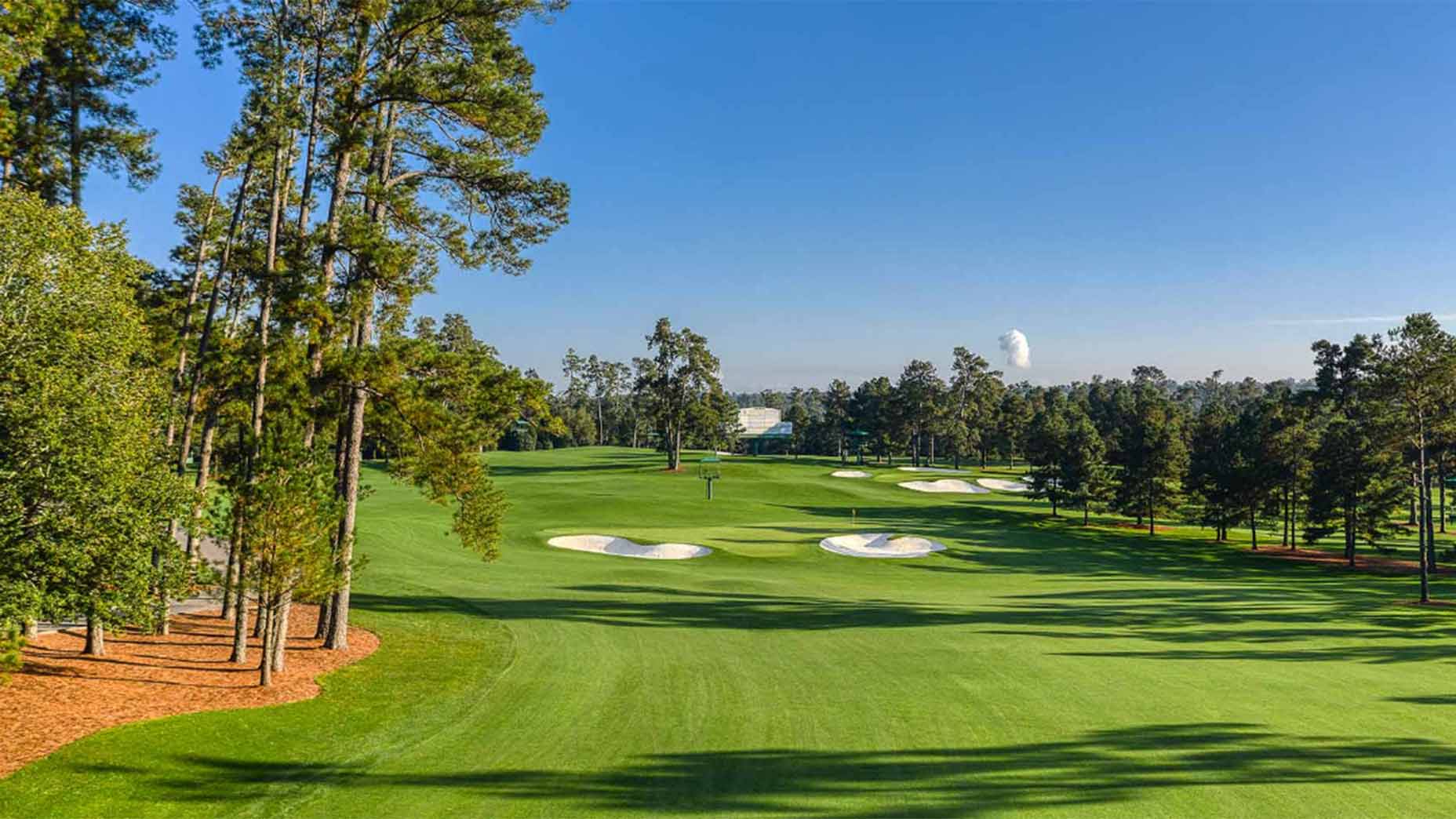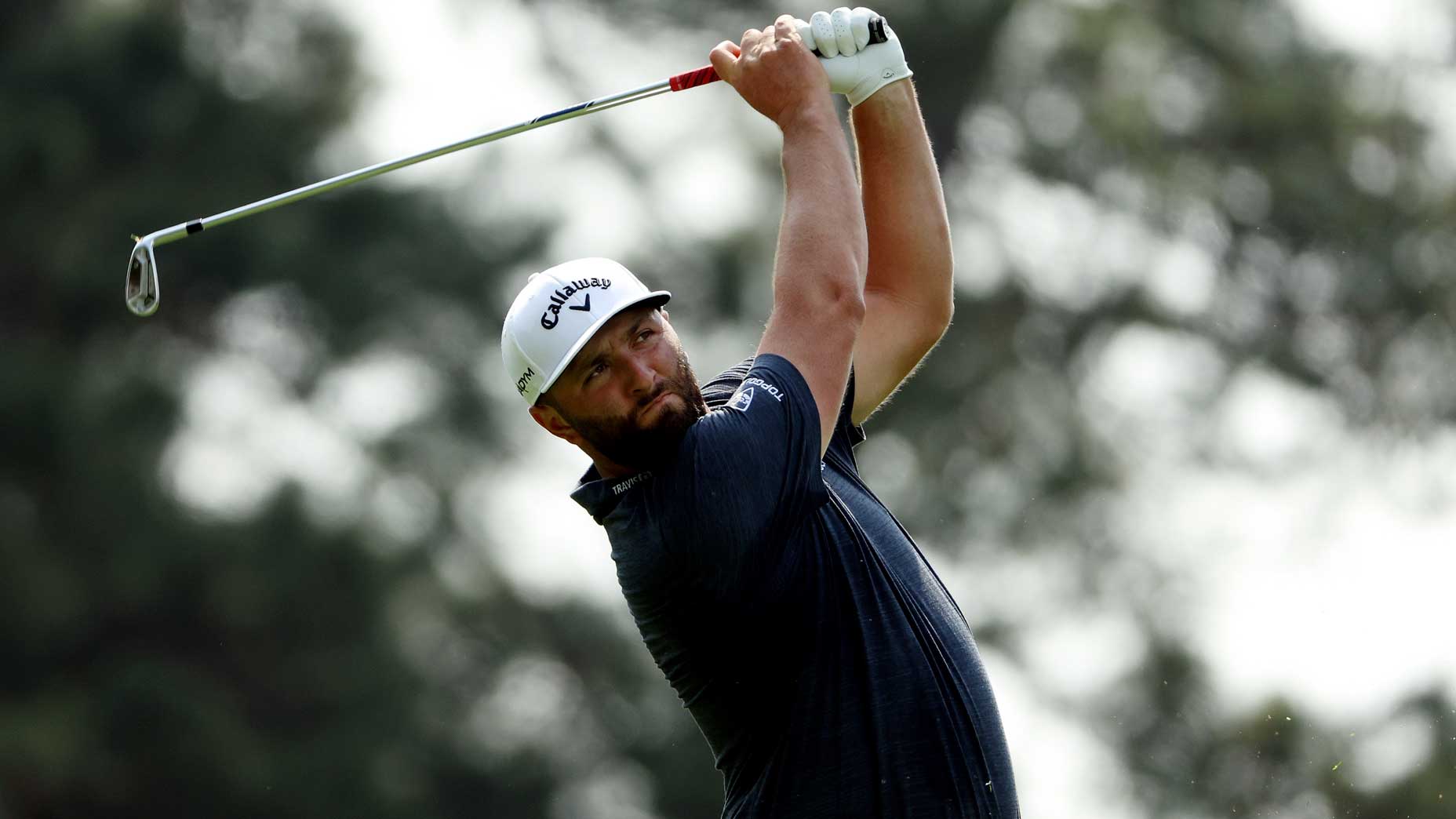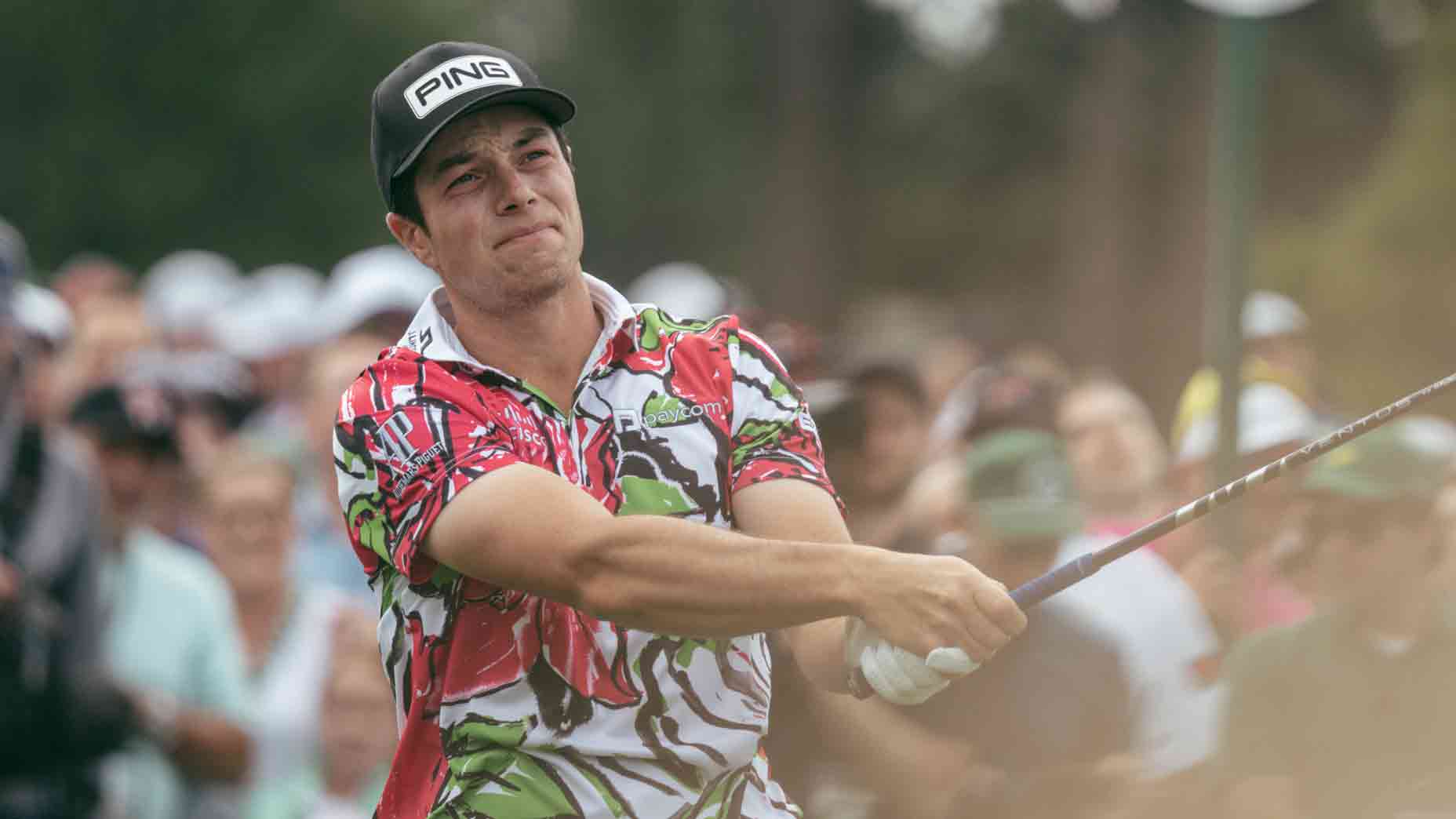
The par-5 2nd hole at Augusta National.
ANGC/Getty Images
Yes, we know Augusta National Golf Club looks great on TV, but this particular course actually has a pretty interesting backstory, too. How did it start? We thought you’d never ask.
Clifford Roberts and Bobby Jones co-founded the club, purchasing the site of Fruitland Nurseries in Augusta, Ga., in 1931. A mutual friend of theirs, Thomas Barrett, Jr., recommended the spot.
According to the Masters media guide, Jones was shocked when he first saw the course.
“Perfect!” he said, looking on from the area that is now the practice putting green. “And to think this ground has been lying here all these years waiting for someone to come along and lay a golf course on it.”
They had big plans, and they hired Dr. Alister MacKenzie to design the course. MacKenzie was already a renowned course architect by this point, with courses including Pasatiempo, Cypress Point, Royal Melbourne and Crystal Downs on his resume. MacKenzie remains one of the most important figures in the history of golf course architecture. During World War I, he worked on military camouflage, techniques he later used in golf-course design. Even before stepping foot on the Augusta National property, MacKenzie had the entire course designed based on topographic maps of the site.
Construction in Georgia began in 1931 and the formal opening took place at the beginning of 1933. And if you are wondering exactly what MacKenzie’s design philosophy was, you can start here. His 13 principles of golf-course design are still referenced frequently in architecture circles today.

Bettmann Archive
While MacKenzie is the original course architect, many have since had a hand in reshaping the design. Robert Trent Jones made some significant changes, as did Perry Maxwell. Six-time Masters champion Jack Nicklaus has given advice and helped in some renovation decisions. Tom Fazio also made significant changes to the course over the years. This does not even begin to count all those who have consulted with Augusta National on possible changes, including Arnold Palmer. (Also, fun fact: the course was used as a cow pasture during World War II, when the Masters took a three-year break.)
To this day, Augusta National continues to change and evolve on a yearly basis. The most drastic difference for 2023 will be the new back tee box on the famed 13th hole. Technology innovations have forced the club to continuously lengthen holes in an attempt to challenge players and maintain the integrity and original intent of the holes.
Augusta National looks very different today than it did on opening day in 1933, but much of the core elements of MacKenzie’s design remain. His brilliance is a large reason we all look forward to the best golfers in the world teeing it up in Georgia each April.









